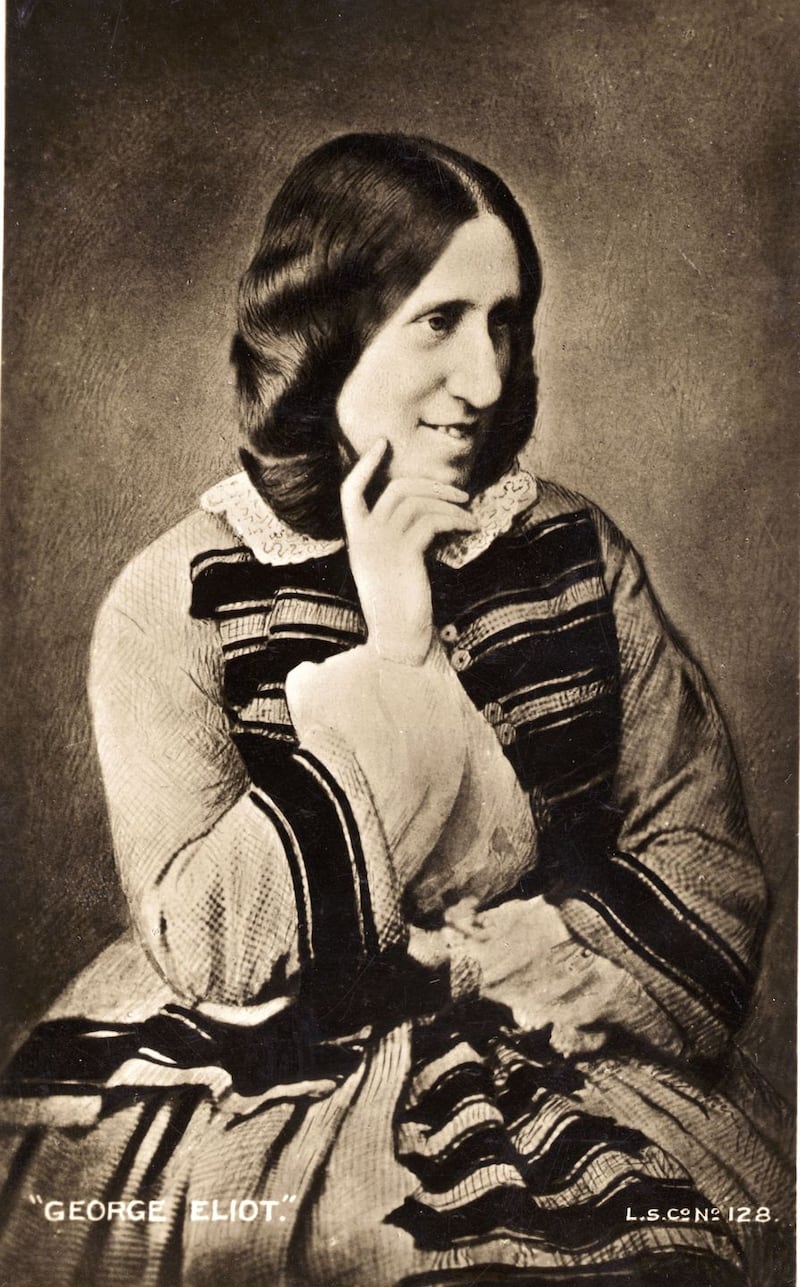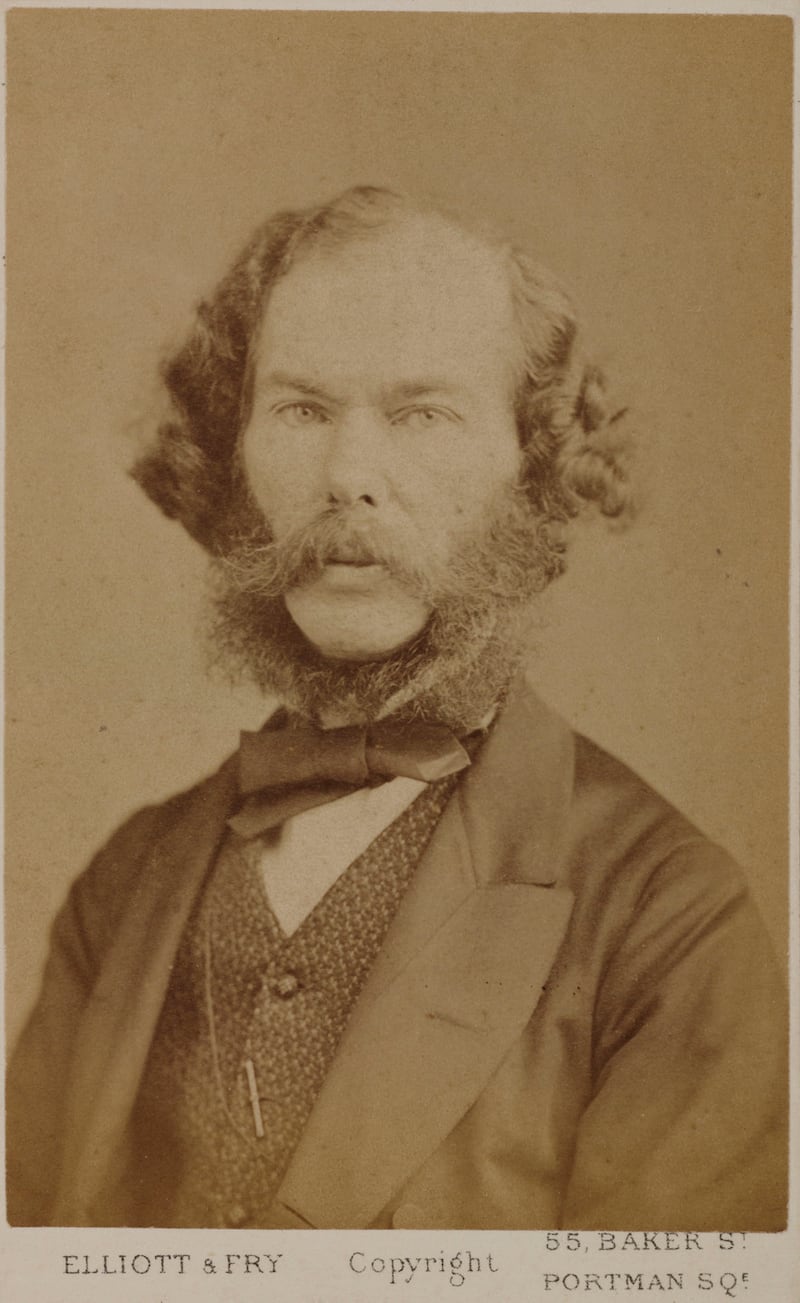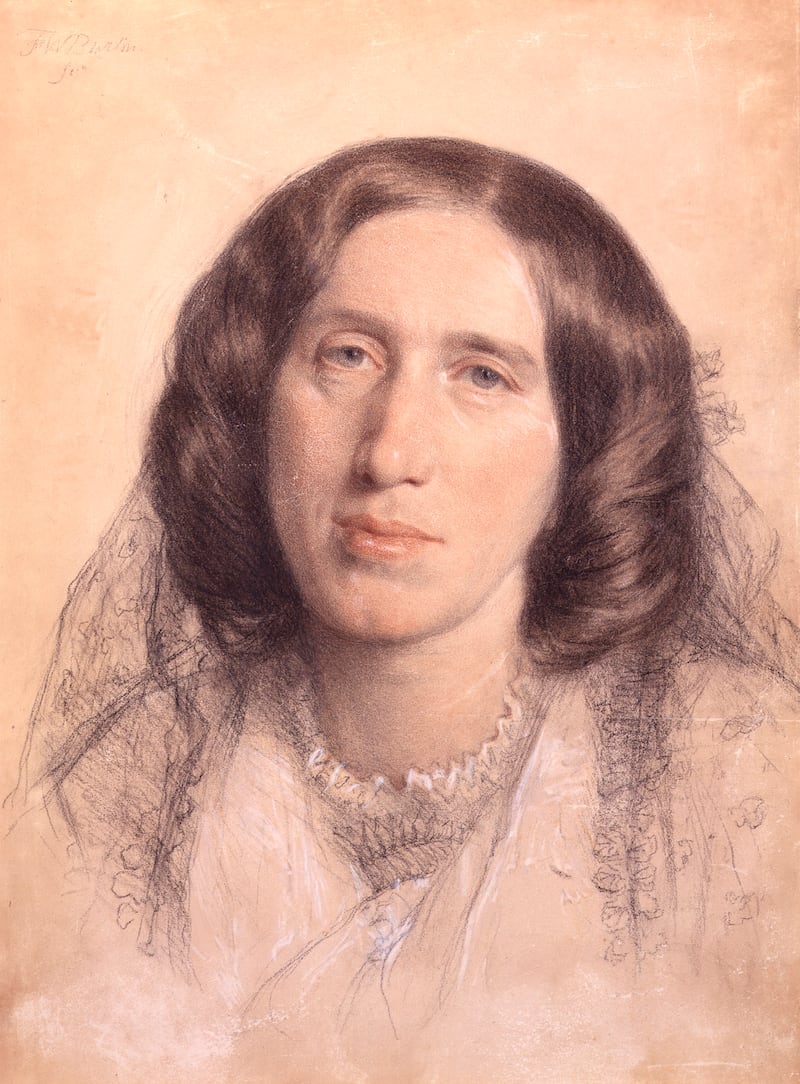A biography tells a story, but is constrained by fact, give or take an interpretation or two. A novel also tells a story, but aims for truth of another kind. What happens when you put the two together? Writing a novel about George Eliot, whose real name was Marian Evans, I wanted to do just that. I researched her closely, so that the scenes are all underpinned by, or related to biographical fact. I took the liberty of inventing thoughts, feelings, sensations, dialogue – but to fit with what I found. I include authentic letters and diary quotations. I wanted the reader to live the highs, the lows, the drama of her life through fiction – but with the concomitant thrill, that it really happened.
The facts of Evans’s life are dramatic; she was infamous before she was famous. In her early 30s she decided to live openly with a married man – George Henry Lewes, who, though separated from his wife, couldn’t get a divorce. She was immediately notorious and ostracized. Her family cut off all contact with her for 25 years. But living quietly with Lewes, she began to write her fiction behind the pseudonym, and her novels began to attract a wonderful kind of attention. When Adam Bede’s fame had mounted, the author declared herself. And now began her metamorphosis, from controversial atheist intellectual to secular saint, adored as the moral voice of England. Even the unconventional union with Lewes became revered, as the triumph of love over convention.
But shortly after Lewes’s death (“the whole of Europe mourns with you” wrote Russian novelist Ivan Turgenev), when she was still grieving, she found herself falling in love. The object of her love was now Johnny Cross, friend and financial manager, 20 years younger. Cross asked her to marry him. She was torn. By becoming his wife, the secret romance would become public. Should she go ahead? She had told absolutely no one about it so far. She feared wrecking her sanctified image; or, as she called it, her “legacy”.
Here’s the thing about Evans though. She always did, in matters of love, what she wanted. At the same time she minded intensely, with excruciating sensitivity, about what people thought of her. The two desires, to be loved and to be well thought of, met in a place of tremendous conflict where Cross was concerned. And this is especially where my novel parts company with Evans biographies. The episode with Cross is usually written up in a few pages, and feels like a coda to the real life before. But it would be my novel’s climax.

Inner story
So how to structure a novel about a famous writer, so that it isn’t merely fictionalised biography? Avoiding birth-to-death chronology, I set it at key points in her life, moments of change or conflict, where the facts were dramatic in multiple ways. The first chapter, for instance, is set in Jersey in 1857, when Evans was living her ostracized existence, (the island setting symbolic of her isolation) precisely at the point when she plucked up courage to write to her brother and sisters telling them about Lewes, hoping they’d be happy for her. And then comes the terrible letter back from her brother’s solicitor, and from the siblings, breaking off all contact with her. Her isolation had only intensified.
Yet Evans’s story offered entertaining and ironic, dramatic opportunities too. In spring 1859, when Adam Bede had just come out to rave reviews, Evans and Lewes had become friends with Richard and Maria Congreve. In a comedic scene the Congreves are talking about the wonderful new novel Adam Bede, and Richard Congreve, in his severe and slightly pompous way, is urging Lewes to read it. Evans’s authorship was a carefully preserved secret then, and everyone was wondering who George Eliot was. The scene is made up but the underpinning facts are there: Adam Bede was a talking point in London in those months, the new friendship was growing between Evans, Lewes and the Congeves, especially between Maria and Evans; and we know Evans revealed the secret of her authorship to the Congreves in Lucerne later that year.
The inner story of my novel was Evans’s rise from notoriety to her iconic image, of a kind of moral beauty; all of which is menaced by her romance with Cross. This final section begins in the aftermath of Lewes’s death, when Evans starts to experience the growing attraction, right in the middle of her grief, between herself and the younger man.
The relationship raises questions because of subsequent dramatic events. After nine months of uncertainty, trying to decide whether or not to go ahead, Evans married Cross on May 6th, 1880. But on the honeymoon Cross leapt from a hotel balcony over several gondolas into Venice’s Grand Canal, in an attempt to drown himself. He was rescued, and gradually recovered.

In biographies the relationship remains riddlingly blank, not least because documentation is scarce. There are few letters; her diary entries are laconic to say the least. For research purposes I spoke to descendants of Cross, hunted for more letters, but to no purpose. I learned nothing new, and looked instead more closely at what was there.
Safe port of call
Evans died before the year was out. Cross lived until 1924, for 44 more years, with no woman in sight. He might have been gay. He might have been involved to a disturbed degree with his mother. Yet looking once more at the bare biographical facts, the shadowy picture that emerged was more interesting than I had first realised.
Cross met Evans and Lewes in 1869 with his mother, Anna Cross, and soon a great friendship formed between them all. Lewes’s diary always lists the cast of visitors that came to visit on Sundays and Cross starts to recur with nearly unfailing regularity. By 1872, Cross was not just a constant guest at the salons, he had become Lewes and Evans’s financial manager, managing their investments; he was looking for a country house for them; when they wanted to buy a carriage, Cross leant them his coachman to help make the right decision. Evans and Lewes began calling the helpful and trusted Cross “Nephew”.
In 1876 Cross finally found the country house for them. Somehow it was no surprise to read that the house he found, in Witley in Surrey, was only 24km (15 miles) away from Cross’s own residence in Weybridge. When Evans and Lewes moved in, Cross brought a tennis set as a gift; his helpfulness and friendly willingness was unconditional. I had a sense that he was so obliging, he would never reflect back anything problematic to them. Significantly, in a moment of family tragedy, when Lewes’s neglected second son Bertie dies, it’s Cross to whom Evans writes a self-absolving letter. He was the safe port of call.
To make a novel out of biographical material, the pieces of the jigsaw need, imaginatively to click. My novel is not only from Evans’s point of view; it’s also from Lewes’s, and from the activist, feminist and intellectual Edith Simcox’s, and from Cross’s.
I began to read shadowy intention into Cross’s assiduousness; a quiet determination to enter the stellar celebrity lives of Evans and Lewes – one of those people who would not so much make his own life, as find a place in the pocket of others. I wondered too if there was, even when Lewes was alive, a certain latent quality in his recurring presence, in this specialness. (Evans’s letters to Cross , before Lewes died, are humorously from “aunt” to “nephew”; but they can also be tenderly playful to the point of flirtatious.) This “latent quality” was for me curiously confirmed by Simcox, who was in love with Evans, and kept a diary of her passionate, obsessive feelings. A powerful streak of jealousy runs through the diary. Yet she identifies her rival not as Evans’s husband, Lewes, but Cross – the quasi-son, the “Nephew”, the tall, handsome, intimate family friend. She calls him “the fatal Johnny”.
‘Wonderful life’
After Lewes’s death at the end of November 1878, Evans didn’t go to the funeral. For a week she didn’t leave the room in which he had died. Nevertheless, in December, she found the strength to take hold of his unfinished manuscript, the third volume of Problems of Life and Mind, and work on it.

She was eating little, her bouts of hysterical crying were heard by the servants, but she managed this labour of love nevertheless. It’s both impressive and moving; it’s a bitterly cold winter, the pipes are frozen. In the spring, bit by bit, she slowly engages with life again, seeing no one except servants and her stepson Charles Lewes. The pivotal moment comes in April, when, panicked by requests for money, she turns to Cross, “Nephew”, for help.
Cross, as we know, wrote her official Life, sewing together her letters with bits of linking text. “From that moment,” he says demurely, “we saw each other constantly.” The mysterious latent quality identified by Simcox has ceased to be latent. They psychologically fit each other. Evans is at once announcing in a letter to her publisher that she is again finding interest in this “wonderful life” of ours. What Evans and Cross have in common is bereavement: Evans’s partner Lewes and Cross’s mother died within nine days of each other. The grieving pair agree to read Dante together. The romance begins.
There are multiple accounts of Evans’s personally charismatic power, of her fascinatingly tender ugly-beauty. She captivated and enthralled people with her charm. I saw Cross as a natural supplicant. And the account that emerges of the marriage, is very much an account where the power is Evans’s.
Evans was the commanding spirit behind their itinerary on the honeymoon – large amounts of sightseeing and churches, often staying at hotels she’d stayed at with Lewes, evenings that echoed the evenings with Lewes, that involved great quantities of challenging reading. She was instructor and guide.
I came to see Evans’s power as her Achilles’ heel; she had risen gloriously into it, but the eminence had its hubristic danger. Psychologically, emotionally, Cross was a rabbit caught in her more powerful headlights, willing to be anything for her, as he had been willing to do anything for her and Lewes. In his madness he was, I thought, fighting back.
In Love with George Eliot, by Kathy O’Shaughnessy is published by Scribe












